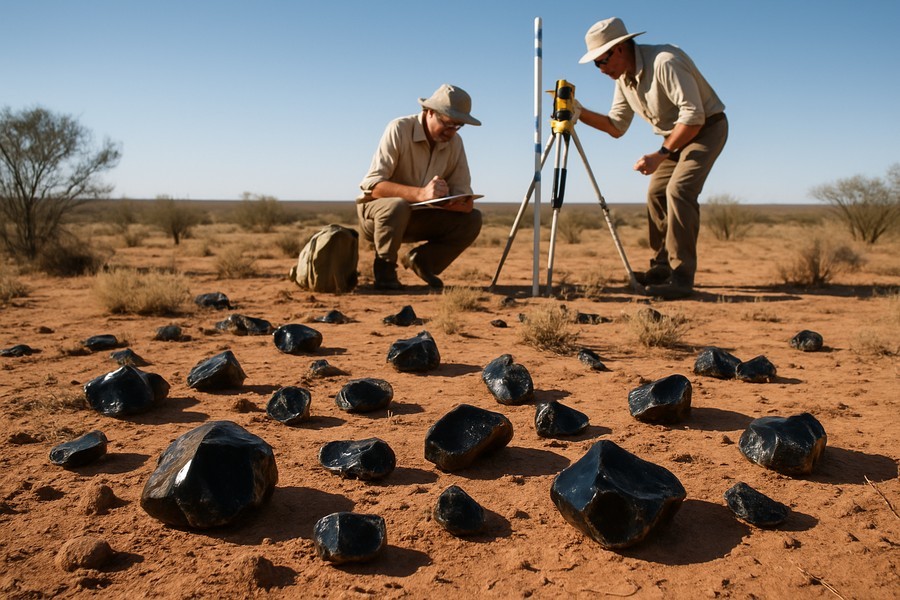
Unusual Glass in Australia Possibly Points to Unknown Ancient Asteroid Strike
A unique type of natural glass exclusive to Australia may be the key to uncovering an unrecorded, ancient asteroid collision, according to recent studies. This discovery is based on a new examination of "tektites," which are glasses formed by the impact of meteorites on the Earth.
Searching for the Impact Crater
What makes this discovery more fascinating is the fact that the scientists are yet to find the impact crater, despite the fact that the resulting collision must have been tremendous. There are no known craters of the right age nearby. However, the research team has proposed potential locations in the Philippines, Indonesia, and Papua New Guinea. In regions with high volcanic activity like Papua New Guinea, the impact crater may have been mistaken for a volcanic feature, or may have been obscured over time.
Tektites: The Glass That Tells a Story
Tektites are produced when meteorites strike Earth, flinging molten surface rock in all directions. The majority of tektites originate from one of five major splash zones, one of which spread debris throughout Australia and southeast Asia approximately 800,000 years ago.
Studies in 1969 involved tektites from this Australasian field. While most of the glasses shared similar compositions, a few seemed older and chemically different from the rest. An investigation in 1999 revealed that these unusual tektites were several million years old. However, there was a significant margin of error in previous estimates, and insufficient data to determine whether these strange rocks were formed in a distinct major impact.
New Findings, Old Impacts
A recent study involved examining the densities and magnetic properties of several thousand tektites from a regional collection. Out of 417 unusual samples, six were identified that had the same chemical composition as the anomalous tektites studied decades before. The research team concluded that these unique tektites were different enough in both age and composition from most of the other tektites in the region to suggest they were not formed in the impact that created the Australasian tektite field. The team believes these could actually be from an unidentified impact that happened almost 11 million years ago.
These tiny fragments of glass serve as miniature time capsules from deep within our planet's history. The team has named these tektites from this ancient impact "ananguites". Some of these tektites landed in areas inhabited by the Pitjantjatjara and Yankunytjatjara people, who refer to themselves as Anangu, meaning "human being".
Implications for Future Asteroid Strikes
This discovery could help scientists get a clearer understanding of how often Earth experiences extreme impacts and could suggest that impacts large enough to produce tektites are more frequent than previously thought. Knowing when and how often large asteroids have hit Earth in the past can help us assess the risk of future impacts, which is crucial for planetary defense.
